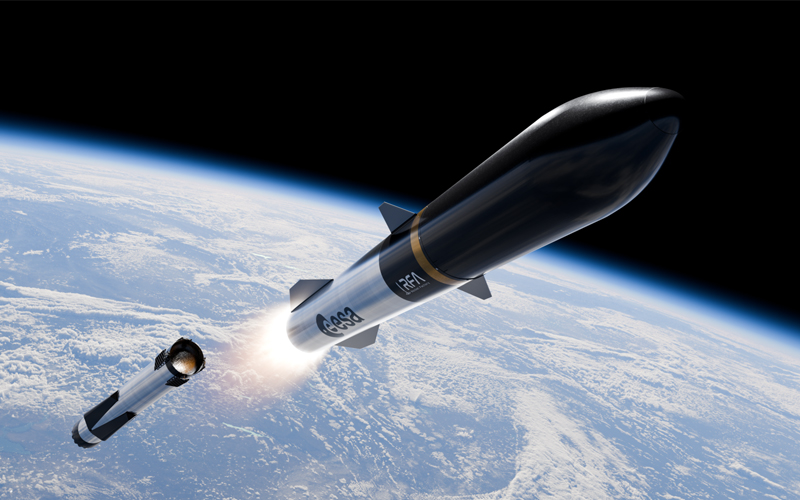
The European Space Agency has revealed the findings of a pair of studies it commissioned to explore how Europe could develop a rocket capable of delivering 100 tonnes to low Earth orbit.
In June 2022, the European Space Agency (ESA) published a call for its PROTEIN (Preparatory Activities for European Heavy Lift Launcher) initiative. The initiative aimed to award contracts for Phase 0/A studies that would examine the feasibility of a European super heavy-lift rocket and identify key technologies needed to develop it. In March 2023, the agency awarded PROTEIN contracts to ArianeGroup and Munich-based launch startup Rocket Factory Augsburg.
In a 13 November release, ESA revealed the findings of the two studies, stating that developing a European super heavy-lift rocket that could be introduced by 2030 was “possible in principle.” However, the agency conceded that it would be “challenging” and would require immediate action.
“The Protein studies show we can do it, the next step is political will.”
As Europe looks to move forward with developing a reusable super heavy-lift, a key technology gap that would need to be filled, according to ESA, is the development of a high-thrust staged-combustion engine.
ESA is currently pursuing no fewer than three high-thrust engine development projects. In October, the agency announced that it had awarded Technologies for High-thrust Reusable Space Transportation (THRUST!) project contracts to The Exploration Company and Rocket Factory Augsburg. Additionally, in September, the agency awarded a contract to Pangea Aerospace for the company to continue the development of its Kronos engine.
The Rocket Factory Augsburg super heavy-lift rocket proposal
Rocket Factory Augsburg (RFA) proposed two and three-stage variants of its reusable rocket, which would stand 130 metres and 140 metres tall respectively. The rocket would be powered by a combination of the ArianeGroup-developed Prometheus engine and the RFA Helix engine. The two-stage variant would be capable of delivering up to 100 tonnes to low Earth orbit at €200 per kilogram. The three-stage variant could deliver up to 115 tonnes to low Earth orbit at €285 per kilogram. The cost estimates were based on seven engine reuses and 32 vehicle reuses.
The ArianeGroup super heavy-lift rocket proposal
ArianeGroup proposed a semi-reusable rocket and a fully reusable rocket that makes use of the company’s proposed SUSIE upper stage. The semi-reusable variant was referred to by ArianeGroup as the “Flag ship.” It would be 8.5 metres wide and stand at around 100 metres tall. The fully reusable variant, which the company referred to as the “Sister ship”, would stand 130 to 135 metres tall with a diameter of 9 metres. Both variants would be capable of delivering 100 tonnes to low Earth orbit for €280 per kilogram. The fully reusable variant and the first stage of the semi-reusable variant would be reused for up to 50 flights.




